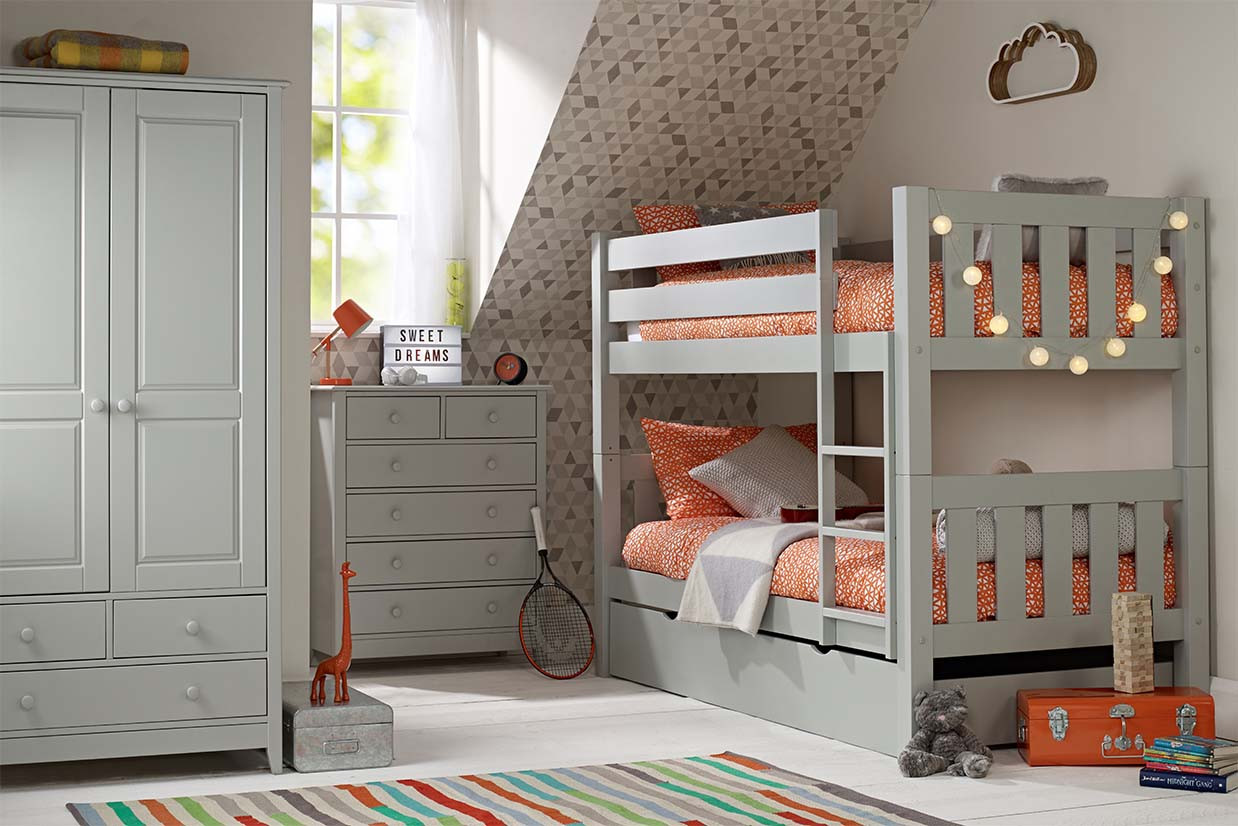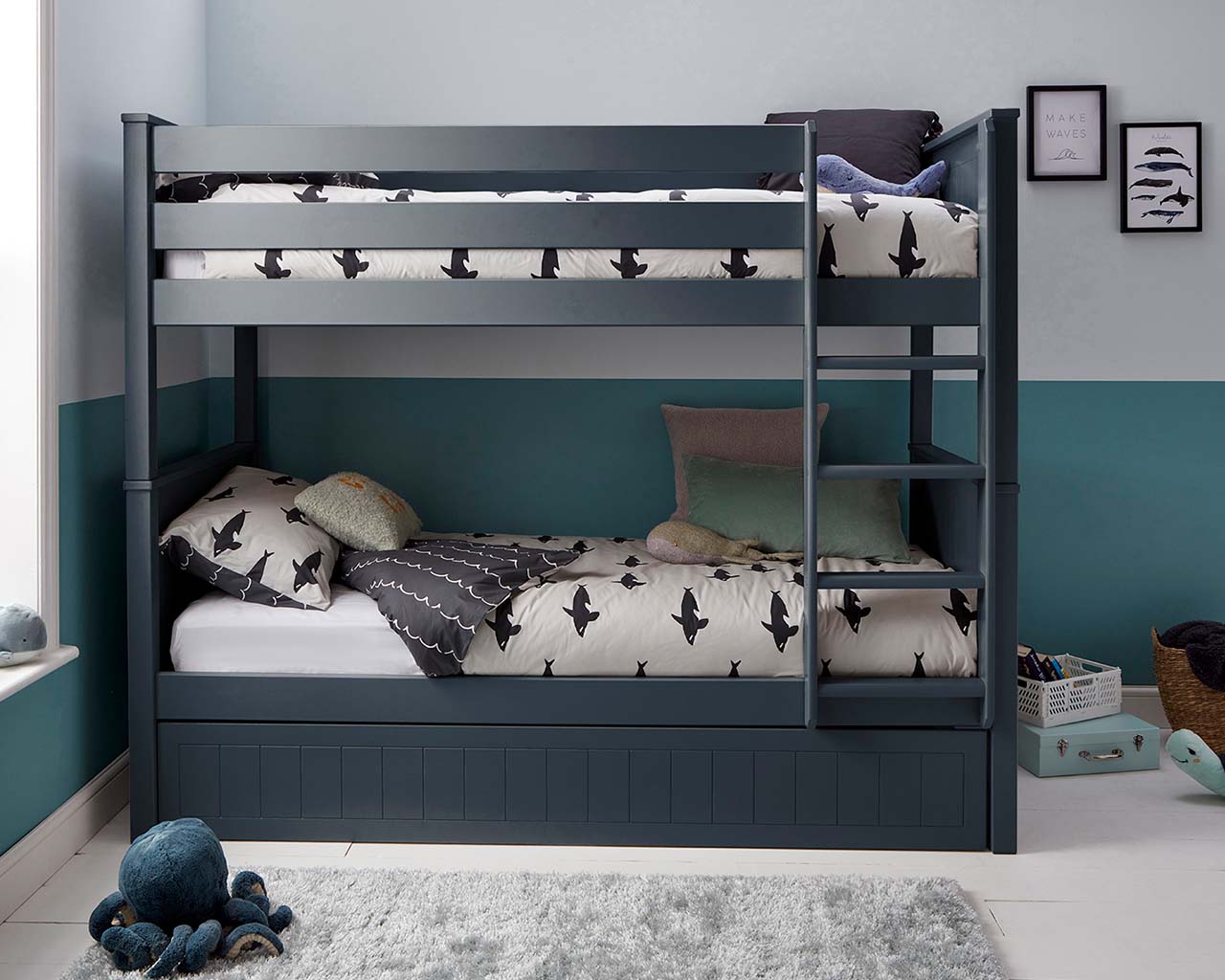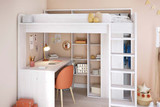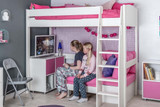Should I choose a Bunk Bed or Two Singles?
If you’ve got more than one child, then you’ve probably considered getting bunk beds at some point. Pretty much everyone has wanted a bunk bed as a kid, but as a grown-up, unfortunately there are more practical things to think about too!
The decision of whether to choose children’s bunkbed or two single beds ultimately depends on your personal circumstances and needs. We’ve pulled together some factors to consider to give you a helping hand with your decision:
Space
This is arguably the biggest factor for most people. Bunk beds for kids are a great space-saving option, especially if you have limited floor space. If you have a small room, a bunk bed can be a good choice as it allows two people to sleep in the same footprint as one bed.
This frees up more room for children to play and hang out in their bedroom. It also means you can fit in extra furniture like a wardrobe or chest of drawers. However, don’t forget that lots of single beds come with under-bed storage, so that might not be an issue. If you have a larger room, two single beds may be a better choice as they offer more space for each child.
Age of the sleepers:
If the sleepers are young children, they may enjoy the fun and novelty of a bunk bed. Please bear in mind that for safety reasons, the recommended age for sleeping on the top bunk is 6+ years. However, if the sleepers are older children or teens, they may prefer the independence and privacy of having their own single beds.
Safety concerns:
As we’ve just mentioned above, bunk beds are recommended for children aged 6 and above. You need to consider how well your child can navigate the ladder during the night and climb in and out of the top bunk. They can be less safe than single beds, especially for younger children. You’ll also need to ensure that the bunk bed is sturdy and safety is adhered to. Single beds of course don’t have the same concerns as when sleeping at height.
Don’t forget about the mattress in terms of safety too. The mattress on the top bunk must sit safely into the frame so there is no danger of rolling out of bed. You can rest assured that any mattresses we recommend alongside a bunk bed on the Room to Grow site will be appropriate and safe.
Comfort:
Some people find bunk beds uncomfortable, especially climbing up and down the ladder to get in and out of bed. Consider the width of the steps for little feet, and whether they have handles to grab on to. If you or the sleepers have mobility issues or prefer to sleep on a lower bed, two single beds may be a better choice.
Think about how comfortable you’ll be tucking your child in at night or when reading bedtime stories. Sitting up in bed may be difficult on the lower bunk bed, depending on the height of the child and the space between the bunk beds. Another consideration is the height of the bunkbed and the ceiling height, you need to have enough space for the sleeper on the top bunk to be able to sit up comfortably.
Changing laundry:
As a parent, you’re no doubt thinking of practicalities, and an important factor to consider is changing the laundry. Changing the sheets on a top bunk is a little more challenging than making 2 single beds! Unless you can teach your child to change the sheets on the top bunk you’ll need to be prepared to climb the ladder yourself. If that doesn’t appeal, then two single beds might be the solution for you!
Fun:
Usually at some point in their childhood, every child wants a bunk bed. It symbolises fun and sleepovers! The adventure of climbing a ladder up to bed is far more exciting than just climbing into a low single bed. Being able to invite a friend to stay over for sleepovers is great fun and a phase many children go through. Bunk beds can come in a variety of fun and playful designs, such as those that resemble castles, tents, or treehouses.
There are lots of ways to make single beds fun too though. Things like bed canopies and fairy lights help to create a cosy space. Bedding and cushions that match your child’s personality will help to make if feel a safe and comfortable space.
Cost:
Bunk beds are often more affordable than two single beds, so if you're on a budget, a bunk bed may be a good option. Consider the material of the bunk bed; wood or metal, usually metal bunk beds offer a cheaper option.
A bunk bed can also have added longevity as many styles will detach into two single beds. That means that if the novelty wears off, or if your circumstances change and you have more space, then you can still have two single beds without the expense of purchasing them new.
Room Decor:
When decorating a room for two children it is easier to split the room with single beds and decorate half the room for one child and the other half of the room for the other child, allowing them to show their individual characters and have their own preferences. With a bunk bed unless both children agree on a room colour or theme, then more neutral room décor is preferable and you will need to find other ways to highlight their individuality, such as through bedding on the individual bunks or having separate areas of the room that they can personalise.
Ultimately, it's important to consider your specific situation and needs to make the best choice for you. As we’ve just mentioned, a winning solution could be to purchase a bunk bed that splits into two single beds. That way you can have the best of both worlds. When your children are younger they can have a bunk bed and all the excitement that it brings. As they grow up and the fun of the bunk bed wanes, you can convert it into 2 single beds giving them their own independence with individual beds in the bedroom.
Remember when choosing bunk beds there are many factors to consider;
- Height of the bunk bed for climbing and for space between the top of the bunk and the ceiling.
- The ladder style and how confident your child is climbing the ladder. A straight ladder takes less space in the room but a slanting ladder is easier to climb. Are there ladder treads to stop little feet slipping or hand rails to aid with climbing?
- The space between the bunks so the child on the lower bunk can sit up comfortably in bed.
- The material the bunkbed is made from, whether wood, metal or fabric depending on the style of bunk bed you are looking for and the budget you have to spend on a bunkbed.
- Longevity of the bunk bed, can the bunk split into single beds when a bunk is no longer desired so it can be used as single beds for many more years to come.
- The colour of the bunkbed is important, do you want a neutral colour like white to act as a blank canvas in the room décor; or do you want a coloured bunk bed in dark grey, blue or green to make a real statement and a feature in the bedroom; or a designer style bunk bed in oak and white for a Scandi feel. This will depend on personal preference and the style of your home.
Ultimately, the choice between a bunk bed and a single bed depends on your specific needs and preferences. It’s important to consider factors such as space, age, safety, comfort and cost to determine which option is best for you.
Recent Posts
-
Unlocking the Potential of High Sleeper Beds for Teenagers
As teenagers go through all the ups and downs of being a teen, their likes and dislikes change a lot
-
Choosing Between a High Sleeper Bed vs. Mid Sleeper Bed
As your little one grows, so do their needs, and finding the perfect kids’ bed for them becomes












